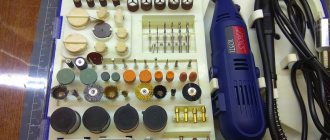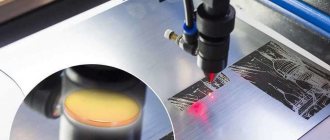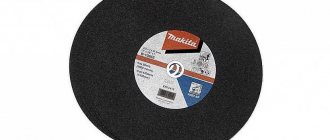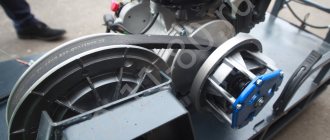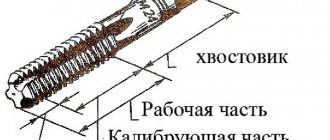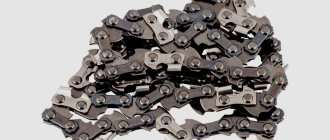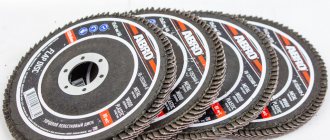In a home workshop or when carrying out repairs on your own, you often need to cut some material quickly and evenly. For this type of work, a manual or electric jigsaw is used. The tool makes simple and straight cuts in metal pipes or sheets of drywall, and copes with the function of filigree threads or cutting out oval and rectangular holes.
Various manipulations are performed with jigsaw files with certain characteristics. Universal carving blades exist, but they perform the simplest operations and quality and speed suffer during processing. It is important to choose the right type of saw material according to the description for specific jobs and tools.
Jigsaw blades: marking to help
For a non-professional person, purchasing the right saw consumables can be confusing. You can always ask the question: “What are the types of consumables? Which company's products are better? Many brands produce specialized types for wood, iron, plexiglass, and plastic. It is important for a carpenter or home craftsman to understand the purpose of purchasing products and the selection criteria that will help determine the desired functionality.
Alphanumeric markings on the canvas and tail dyeing will help you make the right choice. Each symbol indicates performance and application based on the material being processed.
The first letter is the shank type:
- The T-shape model is the most common among many manufacturers;
- U-shape for older models of screw or block type power tools;
- M - special model with two holes, only for Makita;
- F - standard rectangular shape with one hole Fein.
The second number is the canvas size:
- 1 - short, up to 7.5 cm;
- 2 - average, 7.5 - 9 cm;
- 3 - long, 9 - 15 cm;
- 7 - maximum, from 15 cm.
The penultimate letter is the size of the teeth in ascending order of size:
- A - small;
- B - average;
- C, D - large.
The last letter indicates the special properties of the cutting blade:
- X - progressive pitch of teeth;
- R - reverse or reverse teeth;
- O - a particularly thin edge of the back of the canvas;
- P - ensuring the most accurate cut;
- F - made of double alloy, providing special strength.
Shank type
The shape of the part of the file inserted into the jigsaw - the shank - determines the way it is clamped in the tool.
Saws with a T-shaped tail are ubiquitous. They are suitable for most modern models of jigsaws for wood, such as those developed by BOSCH, a trendsetter in this area. In jargon they are called "European type".
American models (DeWalt, Black&Decker) use saws whose tail end ends in a semicircular cutout resembling the letter U. Such shanks fit all clamps with a block or screw. In the jargon - “American type”.
There are still special Makita shanks and T-shaped “Bosh” shanks, but with two stops. They are suitable only for old models of jigsaws from these companies and, rather, are rarities.
Additional markings on the blade: what is important to pay attention to
Jigsaw equipment is supplied individually and in the form of universal sets of several blades: for soft and hard wood, for metal, and plastic. Responsible manufacturers add supporting information to consumables to avoid mistakes when choosing.
Material letters
- HM – especially strong alloys;
- .HCS (CV) - carbon composites;
- HSS - high speed metal;
- CV - chrome vanadium steel alloy;
- BM (BiM) is a bimetallic structure of strong alloys and high-speed metal, the most durable and wear-resistant.
Decoding the quality characteristics of the cutting edge
- Wood - work on soft wood;
- Hardwood - hard wood and PVC plastic;
- Metall - cutting of steel alloys and metalworking is possible;
- Inox - work with stainless material;
- Plaster, Fiber - fiberglass blanks;
- Alu - for processing aluminum;
- Soft-material - soft rubber and carpeting;
- Acrylic - acrylate and polycarbonate composites.
The purpose of a jigsaw consumable can be determined by the color of the tail section:
- gray color - work with wood materials;
- blue color - metal alloys;
- red - plastic surfaces;
- white - on wood and metal;
- black color - ceramic, steel, soft and fibrous materials.
What it is?
A jigsaw file is a blade equipped with teeth of one type or another, fixed at one end to the movable rod of the tool. Since all materials have their own properties and characteristics, a large number of varieties are produced. They are designed to solve various problems, cutting certain materials. As a rule, craftsmen purchase sets of several types of cutting tools.
Selection criteria may be:
- The most popular and common types of cutting.
- Purpose for a particular material.
- Creation of a universal set that allows you to perform most types of processing.
Separate, specialized samples are also available for sale. They are purchased to perform specific work according to previously known parameters of the material and cutting conditions. The choice of file type is determined by the user’s level of training, experience and knowledge. In order to avoid mistakes and choose the best option, you should study the features and characteristics of the cutting tool.
Cutting down a tree
Jigsaw blades for hand and power tools are made of iron. Regular steel blades are designed for cutting soft and less durable materials. Sharp serrated edges made from reinforced composites have a wide range of functionality and cut metal and other types of raw materials.
For particularly durable structures with complex processing - granite stone, marble, porcelain tiles - diamond-coated saw blades or coated with super-hard alloys are used.
A wide range of saw elements are produced for working with wood workpieces and provide different types of cuts:
- Clean cutting of edges without jagged furniture or laminate boards will provide a cutting edge with a slight spread of fine teeth of less than 3 mm.
- a quick cut at high speed of large bars without maintaining precision will produce a long and wide blade with a significant spread of large teeth up to 6 mm.
- figured cutting is performed with a short narrow blade with a beveled back for improved passage of rounded elements, with fine teeth up to 2 mm.
Marking of files and its decoding without a table
The difficulty is that there is no unified labeling system in the world. However, many manufacturers try to adhere to the labeling system used by Bosch. And the main marking elements are the same on many products.
The purpose and compatibility of files is determined by color, as well as by digital and letter markings. Often the markings are applied to the shank of the file. There it is not erased during operation, and it will always be possible to determine what material it is intended for. But sometimes markings are placed throughout the canvas. Then, during work, the markings are erased, and the master will have to remember what kind of file it is. The colors mean the following:
- Gray – only for wood.
- Blue is for metal.
- White – for metal and wood.
- Red - for various plastics.
- Black - universal for many materials, specified by additional marking.
A saw for hard materials can be used to cut softer materials, but never vice versa. That is, a metal file can be used to cut wood, but not vice versa. But for effective cutting, you should select a file that is suitable for the material or a universal file.
Compatibility with the jigsaw in terms of the shank shape is important. The most common is the T-shank. As a rule, all such files have a standard shank size that fits all jigsaws. But sometimes there are models, especially old ones, that use saws with different shanks and their markings:
- U stands for U-Shaped Shank.
- M - straight shank with two holes, found on older Makita models.
- F – two crossbars and a straight end.
For the buyer, this marking letter has little meaning, since the shape of the shank is visible at the first glance at the file, even in a picture on the Internet.
The markings begin with these letters T, U and others. For example T101B.
The first number after the letter indicates the saw length group.
- 1 – the shortest files, up to 75 mm long.
- 2 – files of medium length, from 75 to 90 mm.
- 3 – files of increased length, from 90 to 150 mm.
- 4 are the longest, over 150 mm.
Special files with a length of more than 200 are marked with two numbers (the number) 10. In this case, there is a four-digit marking after the letter.
For sawing different materials, saws with different tooth shapes and sizes are used. tooth The last two digits indicate the shape and size of the tooth and its intended use for a particular material.
- 01 – teeth without set, ground to obtain a clean cut.
- 02 – for cutting various plastics.
- 08 – special tooth shape for the cleanest cut.
- 13 – wave-shaped file for soft materials.
- 11 and 19 – wood saws.
- 23 and 24 – files with different shapes and tooth pitches.
- 27 – files for copper, brass, aluminum.
- 41 – saws for sheet building materials – gas silicate (foam concrete), plasterboard, fiber.
- 44 – large tooth with a large set for fast rough sawing of wood.
These numbers are followed by a letter marking - one of the first four letters of the Latin alphabet - A, B, C, D. It indicates the size of the tooth in four main groups. A – the smallest tooth, further enlarged.
As an example, the marking of the T101B file is deciphered as follows:
- T – T-shaped shank.
- 1 – short file, up to 75 mm long.
- 01 – teeth without set, ground to obtain a clean cut.
- B is the second smallest tooth size.
This is the simplest marking. At the beginning it was said that the meaning of the marking may differ among different manufacturers. For example, if after the numbers there are symbols other than A, B, C, D, then the marking does not indicate the tooth size, but the pitch, that is, the distance between the centers of the teeth. Deciphered according to the following table:
- G is the smallest step, up to 1 mm.
- E - pitch from 1.4 mm to 1.5 mm.
- A - step from 1.5mm to 2mm.
- B from 2 mm to 3 mm.
- BC - marking of different (variable) steps, alternating larger and smaller steps.
- C - from 3mm to 4mm.
- D - from 4 to 5 mm.
- X - files with different tooth pitches, increasing towards the end of the blade
- RIFF is a blade with a special fine-grained coating for cutting ceramic tiles.
In addition, the purpose of the file can be simply indicated by an English word. Specifically:
- Wood - used for regular wood.
- Hardwood - for hard wood.
- Alu - the first letters of the name of the metal - aluminum.
- Metal - for ferrous and other metals.
- Inox - specifically for stainless steel.
- Acrylic - for cutting polycarbonate and acrylate materials.
- Fiber&Plaster - for cutting plastics and fiberglass.
- SoftMaterial - for soft sheet materials (linoleum, artificial leather and leather, polystyrene foam, polystyrene foam, etc.)
Sometimes the inscription is in Russian instead of English. For example, just “wood/plastic”.
The grade of steel from which the file is made is important. If the length, shape of the shank, dimensions and pitch of the teeth can be seen and assessed without markings, simply by examining the file, then the grade of steel can be determined solely by markings.
- HCS is a steel with a high carbon content, suitable for cutting soft materials.
- BiM—bimetal (two metals). The use of two different metals increases the strength of the canvas. Bimetal blade can be used for different materials.
- CV is an alloy of chromium and vanadium.
- HSS (high-speed cutter) is the most common tool cutting steel. Used for cutting metal.
- Carbide Technology (CT) or NM - files with a super-hard coating of tungsten carbide, cobalt or artificial diamond powder. They can cut ceramic tiles, finishing bricks, various plastics, asbestos-cement sheets, slate and many other materials.
The metal mark is applied separately from the rest of the markings. Most often, also on the shank, located perpendicular to the rest of the markings. For example, look at the markings of jigsaw files, which are shown in the table below.
Table. Files from Rebir and their compliance with expensive analogues from Bosch.
Marking blades for hand jigsaws
A manual jigsaw is a simple arc-shaped design, with end fastenings for replaceable consumables. The saw blade of a mechanical tool differs from the saw blade of a jigsaw in the way it is fastened. The flat ends have no end pin and are easily secured with nuts or levers in the grooves of the arc tool.
There are several basic parameters for hand files:
- TPI - number of teeth per 1 inch. The larger the quantity, the better the quality of the cutting edge, but the speed of work slows down. The average number of teeth is 6 per centimeter.
- The spread of the teeth simplifies sawing and prevents jamming in the workpiece. The cutting width is increased, but chipping along the edge is minimized. Not all specimens have this feature.
- The size range of files is represented by 12 numbers. No. 0 with fine teeth performs curved complex patterns, No. 12 processes workpieces up to 20 mm.
- Types of working blade:
- standard, with identical unidirectional elements and equal tooth pitch. Used for straight cutting, which does not require precision and smoothness of the edge;
- with double teeth they work slowly, but do not overheat and leave an even cut without nicks and a small amount of waste;
- with missing teeth are characterized by high speed and prevent jamming in the workpiece. They heat up less during cutting and remove chips well;
- with a reverse (reverse) tooth pointing upward. Provides an ideal bottom cut of the part, which is important in jewelry;
- spiral teeth are located along the entire diameter. Allows you to make complex shaped cuts at low speed, without interrupting the process.
Canvas dimensions
The capabilities of jigsaw blades are determined not only by the size and shape of the cutting edge. The geometric characteristics of the canvas itself also affect the speed and quality of work. Plus, its dimensions must be selected based on the type and dimensions of the material being processed.
Length
The lengths of jigsaw blades are in the range of 40–250 mm. When choosing a specific length of a jigsaw file, you need to take into account the thickness of the material in the work. It is clear that to cut thick wooden workpieces you need a long saw blade for a wood jigsaw. But if you cut thin sheet materials with a long blade, then due to the possible bending of the metal, it is difficult to obtain an even cut.
Note! When working with long blades, you should understand that the working depth of the cut is affected by the power of the jigsaw.
Width
You need to select the width of the saw blade based on the type of work to be done. For simple sawing, where a straight and even edge is required, wide files are taken. A narrow blade may move during operation, and a straight cutting line will not work.
But when cutting out shapes of varying degrees of complexity, you need to choose narrow jigsaw blades. It is easier to direct them to the side, drawing curved lines.
Thickness
For sawing thin sheet materials, the thickness of the file does not matter much. But when working with thick workpieces, this size affects the quality of the sawn surface. Thin blades will deviate from the perpendicular line during operation, and the cut will be uneven. The thicker the blade, the more even the cut it provides. But there is one caveat - too thick a blade is not suitable for all models of jigsaws. Jigsaws equipped with quick-release devices may not be suitable for thick blades.
Selection of hand jigsaw files for the material
Replacement material is sold in a set of several pieces. Files are made from a variety of raw materials; they cut metal, wood or plastic blanks. The cuts can be of different quality, clean, filigree or rough.
- Thick wooden blocks or plastic will quickly be cut by a standard blade with large teeth (6-7 per cm) or binary teeth. Additional sanding of the wood edge will be required.
- To obtain maximum evenness and smoothness of the edges of fiberboard, finishing or facing materials, a fine-toothed working surface (10 elements per cm) is used.
- A laminate multilayer board or chipboard is cut by a consumable with a reverse gear motion. The cut is obtained without small cracks or chips of wood.
- The filigree work is performed by a spiral blade for precise shaped cuttings, which does not get stuck and rotates well.
- The metal is sawed with a particularly strong blade with many (9-10 per cm) small teeth. The operating speed is low, but with certain skill it can cut a ten-millimeter steel plate or a thin tin sheet.
- PVC, polycarbonate or plexiglass board will be neatly shortened, without splitting the material, by cutting equipment with fine toothed elements.
Varieties of cutting edge geometry
All files differ in the size of the teeth, the pitch between them and the setting (deviation in different directions).
Milled, classic layout
These are teeth cut out on the canvas by milling with a regular set. One tooth is deviated to the left, the next to the right, etc.
It is called classic or traditional because the teeth on all hand saws, two-handed and sawmill saws, etc. are set in exactly the same way.
With this cut, the cut is wider than the blade. Therefore, clamps are eliminated, sawing is easier, and sawdust ejection is easier.
Milled, wavy layout
It also provides a wider cut than the blade, just like a classic routing. The difference is that the deviation in different directions is not just one for each tooth, but wave-like for several. “Waves” enter the material more smoothly, with less resistance.
Files with wavy layout are used for clean cuts on laminated chipboard, MDF, as well as for cutting metals.
Polished, classic layout
The geometry of the teeth of such files is the same as that of the milled ones described above. The difference is that after cutting and setting, the teeth undergo grinding, during which they are sharpened and acquire a smooth surface. Due to this, friction is reduced and sawing is accelerated, the cut is cleaner, and there are fewer chips of the material.
Conical grinding, without routing
The file has an even row of polished, sharpened teeth. In this case, the shape of the teeth is such that the cut is slightly wider than the blade and without setting. Provide precise, even and neat cuts on various materials.
Beware - fake!
Modern manufacturers offer a huge range of replacement materials for power tools and mechanical jigsaws. The average cost for a set of products from well-known brands or new ones can differ tens of times.
It should be remembered that trusted companies value their reputation and monitor the quality of the consumables they produce. Large manufacturers offer a range for amateurs and professionals. But even budget options have excellent performance characteristics.
Care when purchasing will reduce the likelihood of making the mistake of choosing counterfeit files from well-known brands:
- a counterfeit blade made from low-quality raw materials may have chips, minor damage or traces of rust;
- clear edges of the blade are possible with high quality production; the rounded end part indicates a violation of the process during underground stamping;
- blurry, distorted inscriptions are easily erased;
- no branded packaging;
- low price compared to the original product.
The fake quickly wears out and breaks. A counterfeit accessory can damage the workpiece or cause injury to the craftsman. Therefore, how much the product costs is not decisive when choosing equipment.
What does the color of the shank mean on canvases?
When purchasing, you can see that the tail parts (and sometimes the entire canvas) are painted in different colors. If you're wondering what this means, then it's time to find out the answer to this question. The colors of jigsaw shanks and files are as follows:
- Gray ones are the most popular. They are used for wood processing
- Blue - used for working with metal materials
- White - less common, and means the ability to process metal and woodworking materials
- Red - used for cutting plastic
- Black - designed for sawing all other materials such as ceramics, marble, granite
Knowing the color, you definitely won’t go wrong in choosing equipment for the appropriate work.
Top 5 Quality Universal Electric Jigsaw Kits
Recognized leaders in the production of saw blades have not changed since 2022. The high quality and product characteristics of popular models are checked daily on construction sites, furniture production and home repairs. The rating of universal configurations, based on customer opinions, will tell you which consumables are best to buy.
5th place. Stayer Station wagon 159488-Н5
Average price: 132 rubles.
The manufacturer produces a wide range of hand and power tools. In Russia since 1999. Many buyers recognize the quality and reliability of the product and vote for it with increasing demand.
Saw consumables are made from resistant carbon steel, which ensures flexibility and long service life; a special protective coating on the cutting edge allows you to maintain the sharpness of the blade.
Stayer Station wagon 159488-Н5
Advantages:
- main types of cutting: clean, fast, figured;
- processes chipboard, metal, wood, plywood, fiberboard;
- 5 pieces included;
- T-shank;
- budget brand.
Flaws:
- not found.
4th place. "DeWALT"DT 2294
Average price: 739 rubles.
The company's 90-year history is an example of the reliability of the designed equipment. Powerful, durable and precise power tools are complemented by high-performance accessories. Carbon and bimetallic types of steel are used for it. The recognizable yellow and black colors have become a symbol of Swiss quality.
"DeWALT"DT 2294
Advantages:
- for wood and metal blanks;
- 3 types of cuts: clean, fast, figured;
- universal tail section;
- 10 pieces included.
Flaws:
- high price;
- confusing markings.
3rd place. Set “Gross”78295
Average price: 738 rubles.
German quality has been repeatedly confirmed by numerous customers. The company produces tools for professional processing of all types of wood, fiberboard, chipboard, PVC up to 60 mm, laminate boards and high-quality blades for it. Durable steel cutting surfaces made of chrome and vanadium have a long service life. Wear-resistant, with increased hardness.
"Gross"78295
Advantages:
- perform basic types of cuts: rough, fast, clean;
- for metal and wooden surfaces;
- T-shaped European shank;
- 10 pieces per pack.
Flaws:
- high price.
2nd place. Set “Bosch” Mixed Wood and Metall 2609256746
Average price: 599 rubles.
occupies a strong place among the leaders in manufacturers of consumables for power tools. The widest range allows you to select both a single item and a specific set. Modern alloys extend the service life of the product.
The company has introduced its own labeling, which is also used by other manufacturers. Components are produced in Switzerland or the UK, the T-shank is compatible with power tools from Makita, Hitachi, AEG, Metabo, etc.
Set “Bosch” Mixed Wood and Metall 2609256746
Advantages:
- various files for metal, aluminum, several types of wood;
- information packaging;
- 10 pieces per set, 2 of each type;
- universal shank;
- average price category.
Flaws:
- one type of cut is fast.
1 place. Set “Makita” А-86899
Average price: 350 rubles.
A Japanese brand that produces power tools and high-quality equipment for work in professional fields and private use. Durable steel compounds make the files resistant to mechanical wear, bending and creases.
Set “Makita” А-86899
Advantages:
- for wood, metal, plastic;
- T-shank;
- type of cut: rough, clean, fast;
- 5 pieces per pack.
Flaws:
- unclear markings;
- high price.
Type of material to be processed
Initially, a jigsaw was created for cutting wood. Accordingly, replacement equipment was made for this material. However, it quickly became clear that the tool’s capabilities are much wider; almost any material can be cut. The only condition is the use of appropriate fabric. Currently, different groups of paintings have been created:
For wood and its derivatives
The number of wood saws exceeds all other groups.
There are different options:
- For fast cutting. These are long blades with large set teeth, providing high productivity and cutting speed;
- For a clean cut. The blades of this group are equipped with relatively small teeth and have virtually no teeth;
- Narrow files with fine teeth provide a shaped cut. Sometimes they have a notch on both sides, which allows you to make turns with a small radius.
Expert opinion
Levin Dmitry Konstantinovich
In addition, for cutting veneered chipboard or clean sawing laminate, blades with a reverse tooth (directed from the shank) are made. It is more difficult to work with such equipment, since you will have to constantly monitor the position of the jigsaw and fight the buoyancy force.
For metal
The size of the teeth of such files is approximately the same as the size of the notch on the blades of hacksaws for metal. The geometry of the cutting edge is also similar - the wavy pattern helps protect the blade from excessive heat.
There are special types of files for different types of material:
- For steel
- For aluminum
- For non-ferrous metals
Expert opinion
Levin Dmitry Konstantinovich
In practice, metal only needs to be cut occasionally, so keeping a steel file handy is sufficient. It can also cut other, softer metals.
For plastics and polymers
Plastic can be sawed with a wood blade with large or medium teeth. However, you can use equipment with a fine notch if you have to cut hard types of material. The main condition will be to control the heating of the blade - heated plastic clogs the teeth and spoils the edge, and also reduces productivity. There are special types of files for cutting plexiglass, PVC and other polymer materials.
Special types of canvases
A jigsaw can cut very hard materials, such as glass or ceramics. For this purpose, files without notches, coated with diamond, are used. There are sheets for drywall equipped with soldered teeth made of hard alloys. For soft materials such as rubber, cardboard, etc., special blades are used. They do not have regular teeth, but instead have wavy blades, similar to kitchen knives. There are also universal saws that can cut most materials. However, it is impossible to obtain high quality cuts from them.
Top 5 popular models of wood saws for electric jigsaws
5th place. PRACTICE 035-837
Average price: 180 rubles.
The young Russian company appeared in 2003, but already has its own audience of admirers. Consistently high quality of tools and consumables for them, an ever-expanding assortment allows us to quickly conquer the market.
For blade equipment for wooden workpieces, high-strength carbon steel is used, which is resistant to mechanical damage. An extensive range of sizes allows you to select a blade for workpieces of various thicknesses.
PRACTICE 035-837
Advantages:
- processes wood and plywood;
- type of cut: rough, fast;
- universal tail section.
Flaws:
- high price;
- 2 pieces included.
4th place. SMT JT234X-5
Average price: 711 rubles.
An Italian brand with a 40-year history produces cutting tools and accessories. Products are manufactured in Italy, Spain and the United States. The factories operate according to international standards, the process is controlled by the highest class operators.
High-hardness steels and alloys of Swiss and Luxembourg origin provide stable and high-strength characteristics of cutting surfaces. The orange proprietary coating increases service life in the harshest conditions.
SMT JT234X-5
Advantages:
- quantity in set: 5 pieces;
- universal shank;
- working length 90 mm.
Flaws:
- high price;
- only for wood processing;
- 1 type of cut: clean.
3rd place. VIRA T111C552025
Average price: 49 rubles.
The manufacturer produces hand tools and consumables in accordance with Russian GOST and DIM certification - a German quality standard.
The cutting blades are made of high-carbon tool steel. Resistant to breaks and bends, they have reliable strength and flexibility.
VIRA T111C552025
Advantages:
- processes wood, plastic and plywood;
- length 75 mm;
- T-shank;
- low cost.
Flaws:
- one type of cut - fast;
- There are 2 pieces in a set.
2nd place. BOSCH 2607011463h
Average price: 49 rubles.
Saw blades for different types of wood are made of HSC carbon steel. Milling or grinding the teeth allows you to make different cuts.
BOSCH 2607011463h
Dignity:
- several types of cutting: precise, fast;
- 15 pieces included;
- T-shank;
- The set includes saws for regular wood and hardwood;
- low cost.
Flaws:
- a large set for a small amount of work.
1 place. MAKITA A-85793
Average price: 310 rubles.
The Japanese company carefully monitors product quality. Manufacturing components from reinforced composites allows you to increase their service life. A blade with milled teeth can make several types of cuts. The flexibility and strength of the fabric prevents creases.
MAKITA A-85793
Advantages:
- two types of cutting - precise and fast;
- European type of shank;
- length 70 mm;
- set contains 5 pieces;
- low price.
Flaws:
- only for wood processing.
Parameters of jigsaw files
First you need to decide on the list of saw blade parameters that need to be taken into account. So this:
- File fastening standard (shape of shank);
- Dimensions (length, width, thickness);
- Geometric parameters of teeth;
- Purpose (according to the type of material being processed).
Let's look at these parameters in more detail.
File fastening standard (shank shape)
To determine the standard for attaching a saw blade to a jigsaw, you need to look at the passport of your power tool - this should be indicated there. Although quite often several files are included with a jigsaw and by looking at them, you can understand the type of shank that suits you.
Listed below are the main types of shanks found today.
- T-shape
- U-shaped
- Shank for Makita
- Shank for Bosh
T-shank
The T-shank type is the most common type nowadays. This solution turned out to be the most successful and was “adopted” by a large number of power tool manufacturers. This type is often called Boschevsky, because it was the Bosch company that first offered this type of jigsaw blade fastening to the market. Subsequently, other manufacturers began to support this type of shank. Such companies include:
- Bosch,
- Makita,
- Metabo,
- Hitachi,
- Skil,
- AEG,
- DeWalt,
- Sparky
and others.
This shank has proven itself in operation due to its reliability and practicality.
U-shank
The U-shaped shank is considered an American standard, however, it can be considered obsolete, since it is almost never used now, although previously this type of shank was used on jigsaws with screw and block clamps from famous manufacturers:
- Ryobi,
- stayer,
- Black&Decker,
- Skil,
- DeWalt,
- Wolf
and etc.
Makita shank
This is Makita's proprietary shank type. These files are distinguished by their reliability and strong base. This blade can now also be considered outdated and is suitable only for some Makita jigsaws. In this regard, when changing the blade, it may be difficult to purchase it, since the demand for them is now very low, it will be difficult to find such files in the store.
Bosch shank
This type of shank is very similar to the T-shaped one, but unlike it, it is proprietary to Bosch, and accordingly is suitable for jigsaw models only from this manufacturer. This type of fastening can also be considered outdated, and therefore it is very difficult to find it on sale.
conclusions
So, to summarize, it becomes clear that the T-type shank is now some general standard and it has supplanted all other modifications that previously took place. Thus, this greatly simplifies the task for us (consumers) - there is a large selection and there is no need to think too much about shanks, although it is also necessary to know that, theoretically, I can come across non-standard options.
Saw blade dimensions
Like any object in Euclidean space, a file has three geometric dimensions: length, width and thickness. Each of these parameters is important and affects the result of the work in its own way. Now about this in more detail.
Length
The parameter is clear and understandable - the longer the file, the greater the thickness of the sawn workpiece. The range of saw blade lengths for jigsaws is very large - from 40 mm to 250 mm. It would seem that you need to take the longest file and you won’t go wrong. Yes, a long saw is good, as it allows you to cut thick workpieces, but there are a number of issues.
- you have to pay for excess length; the longer the file, the more expensive it is; It is obvious;
- When sawing workpieces of different thicknesses, there will be uneven wear of the saw blade; accordingly, the wear of the teeth at the base will be higher than at the end of the file.
- files bend, and it is much easier to bend a long file than a short one;
- There are cases when the excessive length of the file simply interferes with sawing, for example, it rests on something, while a short file would go through without problems.
It is important to pay attention to an important point - to cut thick workpieces you need not only a long saw - you need enough power for the jigsaw to cope with the load. If you don’t take this factor into account, you can simply ruin the tool - the jigsaw can simply “burn out.”
Width
For an even saw (in a straight line), wide files are more suitable, since due to their width they prevent the cut from being pulled to the side. Accordingly, the wider the file, the more even the cut it can give. With narrow files the situation is the opposite - they are used where you need to make a figured or radius cut, respectively, the narrower the file, the greater the curvature of the cut.
Thickness
And the last, but not least important parameter is the thickness of the file. The thicker the blade, the stronger the file, and accordingly, the more resistant it is to the applied forces and will not “be pulled” to the side. It would seem - the conclusion is obvious - we take the thickest files, however, as in the case of length, it is necessary to point out a number of circumstances. The thicker the file, the wider the cut width, which means:
- more effort will have to be put in
- the cutting time will be longer,
- heating of the workpiece will be greater,
- more material consumption.
In addition, it should be mentioned that not all thick files are suitable for the quick-release mechanism.
conclusions
As always, there is no one universal solution for all occasions. Each time you need to support a file that is suitable at the moment, for the given task, and, of course, for your tool. You probably shouldn’t run to the store every time and select saw blades, but simply have a set of the most commonly used saw blade options.
Geometric parameters of teeth
The geometry of the cutting edge and the tooth set play an important role. The speed and quality of the cut depends on this. Obviously, the wider the teeth are spread in different directions, the wider the cut will be, and due to the fact that the blade itself does not rub against the edges of the cut, there is less resistance, less heating and a higher cutting speed. Of course, the downside of these advantages will be the poor quality of the saw, as well as the difficulty of making an even cut due to the “pull” of the file to the side (since the blade is not fixed in the plane of the saw). There are several types of cutting edge geometry:
- Milled with classic layout;
- Milled with wavy layout;
- Polished with classic layout;
- With conical grinding without routing.
Each of these types of geometries has its own characteristics. Let's take a closer look at them.
Milled with classic layout
This type of geometry is used in simple hand saws and consists of the teeth alternately moving left and right. It is clear that in this case the blade practically does not rub against the walls of the saw, sawing is easy and fast, but in this case there is no need to talk about the quality of the cut and evenness. This type of wiring is quite popular, as it is easy to manufacture and has its undeniable advantages.
Milled with wavy layout
For saw blades with this form of setting, the cutting edge has a wave shape, with several teeth falling into one half-wave and each of them has a different deviation from the central axis. This type of setting gives a clean cut, so it is mainly used when sawing hard wood, metal, etc.
Polished with classic layout
As in the case of the “Milled with classic set” option, the teeth are alternately set in different directions, but at the same time they undergo an additional processing process - grinding. In this case, the cut is much cleaner, but the speed of work is maintained. This type of wiring is used when sawing chipboard, VDP, MDF, etc.
With conical grinding without routing
With this option, the teeth are almost not set, but they are specially sharpened and polished. When sawing with such blades, a very clean and even cut is obtained, but the speed of work suffers accordingly and a greater number of revolutions (saw frequency) of the tool is required.
Purpose
From the very beginning, jigsaws were used exclusively for sawing wood, but over time, the versatility of this tool has significantly expanded the scope of its use. Thus, at the moment it is possible to saw almost any sheet material - this includes wood of various species and densities, metal, glass, ceramics, various glued and pressed boards (fibreboard, MDF, chipboard, OSB, etc.). Manufacturers of saw blades, when developing specific models of files, determine its purpose by the type of material being cut; accordingly, the entire variety of saw blades for jigsaws can be divided into the following groups:
- for wood and wood boards;
- for metal;
- for polymeric materials and plastics;
- special purpose.
Let's take a closer look at each group of these classifications.
Saw blades for wood and wood panels
Sawing wood is the main purpose of a jigsaw, which is why there is the greatest variety of wood saws. This is dictated by the wide variety of types of wood and various boards derived from it (plywood, chipboard, fiberboard, OSB, etc.).
All wood files are divided into several categories:
- for quick cutting;
- for a clean cut;
- for figured cutting;
- for a “blind” cut.
Saw blades for quick cutting of wood
Quite often you need to quickly saw off a workpiece and the quality and cleanliness of the cut is not at all important. In this case, special files are used, which have some distinctive features:
- long length;
- large, large teeth;
- large tooth set
Saw blades for clean wood cutting
When making furniture, cutting parquet boards and in other cases, a high-quality and clean cut is required. For this purpose, special files are used, which can be recognized by the following distinctive features:
- average tooth size;
- there is no or very slight tooth spread.
Typically the teeth point towards the jigsaw. This is done so that the main cutting movement occurs at the moment of retraction of the file (the movement of the file towards the jigsaw), while the master does not experience much effort when sawing. The disadvantage of this principle is that chips from the file are obtained on the side that is visible to the master - where the marking line is. But sometimes it happens that you need to do the opposite, so that the front side of the cut (without chips) is on top. In this case, special files with teeth are used that are directed away from the jigsaw. Sawing with such files is accompanied by increased efforts by the master, who must overcome the force of pushing out the file with a jigsaw.
Files for shaped cutting of wood
A jigsaw is a universal tool - it allows you to make figured cuts, that is, with small radii of curvature, and in some cases it is even possible to “turn on the spot” (make the saw not smooth, but at an angle). For such a cut, special files are again needed - they are easy to recognize - they have:
- narrow canvas
- short length
- fine teeth
Files for blind cutting of wood
A blind cut is a cut when the size of the maximum overhang of the file is less than the thickness of the workpiece.
This topic is quite controversial and there are many opinions on this matter. Nevertheless, we will state our position. A blind saw is possible and does occur. But you need to understand a number of points:
- The file must have a special shape;
- The load on the jigsaw increases many times;
The file must have a special shape of the last tooth and the tip of the file, as shown in the picture.
When making a blind cut, the entire saw blade is used - this is the maximum load for it and the load on the jigsaw itself. In addition, the cut is made in such a way that the last millimeter (or two) of the wood is simply crushed, so there are shock loads on the holder at the moment of maximum projection of the saw. Thus, it is not recommended to make a blind cut on hard wood, or on soft wood - for example, but the master must understand that the wear of the tool at this moment increases many times and the likelihood of breakdowns is very high.
Metal files
The main work of sawing metal is done with a grinder, but sometimes you need to make a curved or radius cut. In such cases, a jigsaw with a special file will help. You can saw both steel blanks and non-ferrous metals. Metal is much denser than wood, so when working with metal you need to understand that the jigsaw works under a heavy load and you need to load it wisely.
Metal files are usually made of durable alloys and have fine teeth with wave winding (see above).
Files for polymeric materials and plastics
A jigsaw can easily cope with sawing various types of polymer materials, plastics, plexiglass, etc. There are specialized files for sawing these materials, although in practice wood or metal files are usually used. A simple rule works: the denser the material, the smaller the saw tooth should be, so simple wood saws are suitable for most plastics. It must be remembered that sawdust from plastic begins to melt at high temperatures; in this case, the saw teeth become clogged with melted plastic and lose their sawing properties. Therefore, it is important to monitor the temperature of the file and not overheat it; accordingly, you need to cut at low speeds and regularly let the file cool.
Special purpose files
There are various situations when it is necessary to saw various exotic materials that are not typical for sawing with a jigsaw - glass, ceramics, etc. There are special-purpose saws for these purposes. They are rare and unique, nevertheless they still find their place among craftsmen who work with these materials.
Top 5 popular models of files for hand tools
In modern realities, hand tools are used in amateur workshops or in children's kits for creating one-piece items from wood blanks. The most popular consumables are saws for different types of wood.
5th place. HOBBI
Average price: 214 rubles.
Products of the ORMIS company, which is dynamically developing in the markets of Russia and Kazakhstan. Equipment made from high-quality materials complies with international DIM standardization. Passes a mandatory quality control system.
HOBBI files
Advantages:
- stable and durable bimetallic composition;
- increased flexibility;
- for wood;
- 10 pieces per pack;
- low price.
Flaws:
- No.
4th place. FIT set 130 mm
Average price: 218 rubles.
The Canadian manufacturer produces mechanical and electrical tools and the necessary components. All products comply with American and European standards. Modern technologies and high-quality tool type alloy make the products reliable and in demand.
FIT set 130 mm
Advantages:
- long service life;
- 20 pieces per pack;
- low cost.
Flaws:
- not found.
3rd place. DREMEL 2615MS50JA
Average price: 420 rubles.
The company has been manufacturing universal tools for 95 years. High-precision equipment for a whole range of operations is very compact, light in weight and has excellent performance.
Wood saw blades are made from durable composites and can process plastic, laminate, fiberboard, and chipboard. Form a long cut.
DREMEL 2615MS50JA
Advantages:
- high-quality consumable material;
- wide range of processing types;
- long-term operation;
- resistance to bending and breaks;
- 5 pieces per set.
Flaws:
- high price.
2nd place. PEBARO set
Average price: 149 rubles.
Since 2000, the German company has been one of the best in the production of tools and components for hobbies and children's creativity. The company's products are highly reliable, durable and safe to use.
PEBARO set
Dignity:
- Made from high quality steel composite;
- for plastic and wood;
- 12 pieces per pack;
- low cost.
Flaws:
- No.
1 place. ROS135 mm
Average price: 169 rubles.
Buyers appreciate the company’s wide and constantly expanding range of products, and high Russian quality at affordable prices.
The equipment is manufactured with high tensile strength for extended service life. Special sharpening of the teeth ensures precision in operation and high speed.
ROS135 mm
Advantages:
- heavy-duty blade structure;
- precision sharpening of the working surface;
- 50 pieces per pack;
Flaws:
- No.
Classification Features
The demands placed on the instrument are currently very high. Productivity, speed of work, accuracy of the cut, and its evenness are important. In general, all variants of classifications of blades suitable for a jigsaw can be combined into several groups according to the following criteria:
- shank type;
- material used in the processing process;
- options for the shape of saw teeth;
- canvas width;
- tooth pitch;
- thickness of the canvas.
How to choose the best and most reliable jigsaw blades?
A review of popular brand models allows you to find the best option for your wallet and the amount of work to be done.
Simple recommendations and convenient markings will help you make the right choice. Retail stores and many specialized online construction sites will help you decide where to buy cutting consumables. Study reviews from real customers, compare products by price and order jigsaw accessories online from the online store.
Very often, abandoning cheap counterfeit products in favor of branded products pays off. Additional costs when purchasing consumables will be paid off by the high quality of the cut, the absence of additional processing, the speed of the process and the absence of injuries during the work.
All types of files for woodworking with a jigsaw description and purpose
Let's look at all types of saw blades for wood processing. Each type has a corresponding purpose, which must be taken into account when processing the corresponding types of materials.
How to distinguish a quality canvas from a fake
Jigsaw attachments are produced by various manufacturers: Bosch, Kraftool, Makita, Metabo, Praktika and many others. The price of nozzles from different manufacturers varies accordingly. Craftsmen who deal with jigsaw work every day know not only how to choose and what types of blades there are, but they also know how to distinguish original attachments from fakes.
If you think that the easiest way to avoid falling for a fake is to buy expensive and branded consumables, then you are wrong. Modern unscrupulous manufacturers produce pretty good fakes, which are quite difficult to distinguish from the original, but quite possible if you know some of the features.
- The original nozzle has clear and even edges, unlike fakes. Counterfeits have slightly rounded corners, which indicates that consumables are made from stamped steel
- The presence of signs of corrosion indicates poor quality of the nozzle.
- Fuzzy inscriptions that are distorted and easily erased also indicate that the attachment is a fake
High-quality and original products are sold in special packaging. Usually the set includes five blades, but medium and long blades are sold individually. Please also keep in mind that buying a cheap fake will not only lead to a negative result, but will also cause injury to the operator.

